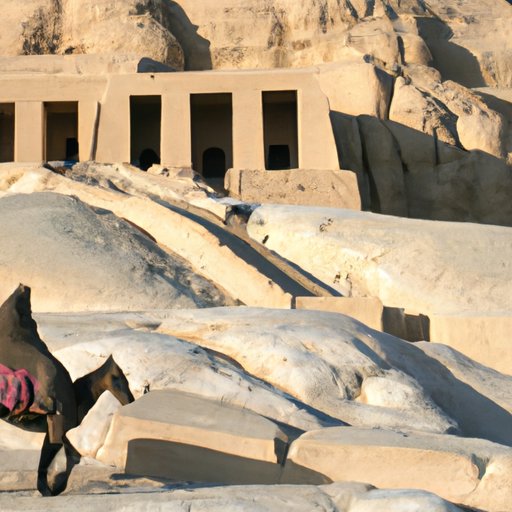Introduction
The Exodus, the foundational event in Jewish history, remains one of the most fascinating and mysterious stories in the world. A central question that has persisted is how many Israelites left Egypt during this event. The number of Israelites who left Egypt is still unclear, and scholars have approached the problem from various perspectives. In this article, we will explore the historical, religious, and archaeological perspectives on this question.
Historical Perspective
The Exodus refers to the departure of the Israelites from Egypt, as the biblical account tells us. Scholars have tried to establish a date for this event, based on the available historical evidence. Some suggest that it happened in the Late Bronze Age, around the 13th century BCE. Others argue that it occurred in the 15th century BCE, during the reign of the pharaoh Thutmose III. However, there is still no consensus on the exact date.
Regarding the number of Israelites who left Egypt, scholars have debated this for centuries. The Bible states that there were 600,000 men who left Egypt, besides women and children. If we include these, some estimate that the total number of Israelites who left Egypt could have been over two million. However, this number has been subject to various interpretations and revision based on different historical, archaeological, and religious contexts.
Religious Significance
The Exodus has spiritual and religious significance for many Jews, Christians, and Muslims worldwide. The Exodus story symbolizes the liberation of the Israelites from slavery and their journey to the Promised Land. It represents God’s power and compassion for his people, who he rescued from their oppressors. The event is also viewed as a defining moment in the history and identity of the Jewish people.
Jewish, Christian, and Islamic religious texts recount the story of the Exodus, and various interpretations have been made about the number of Israelites who left Egypt. For instance, many Jewish traditions interpret the Bible’s number of 600,000 as a symbolic representation of a significant number of people, rather than a literal count.
Archaeological Evidence
The study of archaeological evidence has been a crucial element in understanding the story of the Exodus. However, no direct evidence confirming the event’s occurrence and the number of Israelites who left Egypt has been discovered.
Several theories suggest that such evidence could have been destroyed or yet to be found. Though no direct proof of the Exodus has been found, scholars argue that indirect archaeological evidence can help determine the number of people involved. Based on the available evidence, it is difficult to pinpoint how many Israelites left Egypt or when this event occurred.
Analyzing Different Interpretations
The Exodus has been interpreted in various ways by different religious traditions worldwide. Some interpret the Exodus’s story figuratively, while others view it literally. Jewish, Christian, and Islamic traditions each have their interpretation of the Exodus and the number of Israelites who left Egypt.
Jewish beliefs interpret the Exodus and the number of Israelites leaving Egypt differently than Islamic and Christian interpretations. While Jewish tradition holds the number of Israelites to be figurative, Islamic belief treats that it is a literal number. Christians interpret the Exodus and the number of Israelites leaving it based on different denominations.
Cultural Analysis
The Exodus story has profoundly influenced art, literature, and culture worldwide. The story has been depicted in many different ways, reflecting the shifting cultural and societal contexts over time. Different cultures have interpreted and appropriated the story of the Exodus in diverse ways.
Depictions of the Exodus were among the artworks of early Christians, Jews, and Muslims. These representations and depictions of the Exodus have varied over time, according to culture and societal shifts. The story has been used in literature, film, and television over the years, and these works give insight into how the Exodus story has been interpreted and reinterpreted through the ages.
Conclusion
The question of how many Israelites left Egypt during the Exodus remains an intriguing and complex one to answer. Throughout this article, we explored various historical, religious, and archaeological perspectives on the subject. Historical debate suggests that the exact number may never be known for sure. However, scholars and religious thinkers continue to explore the significance of the Exodus and its impact on the world today. Understanding how different interpretations and cultural appropriations shape the story shows the importance of this event. The Exodus story’s continued influence indicates how foundational it is to the identity of different communities worldwide.
